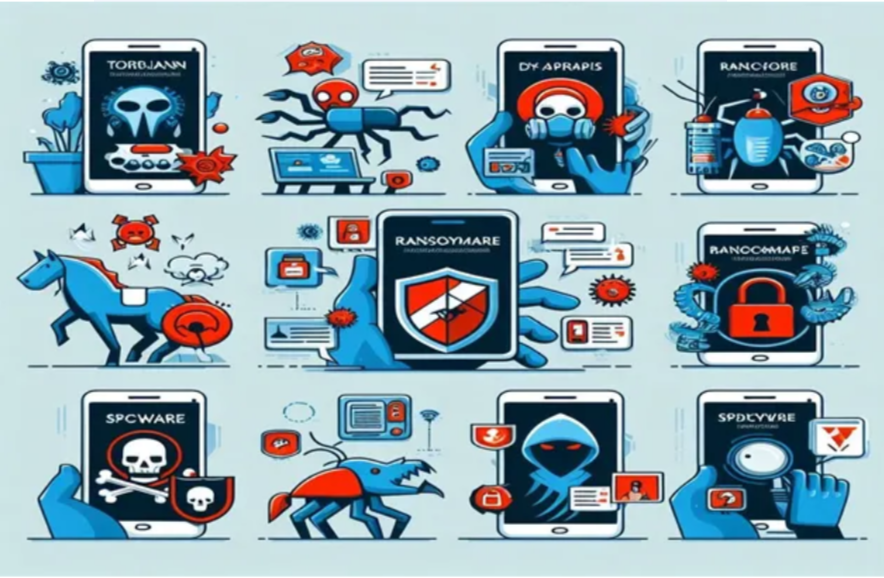
For years, mobile malware has been a rising danger. Many individuals primarily access the Internet through mobile devices, and the “always on” mobile culture can reduce barriers to exploitation by raising the likelihood that a suspicious app will be downloaded or a malicious link will be accessed. Since mobile devices have become significant to so many people, cybercriminals have adjusted their strategies accordingly. Mobile malware poses a serious risk to both individual and corporate security, and the threat landscape for mobile devices is constantly changing. Come along as we explore the murky world of mobile malware, breaking down its tactics and learning how it sneaks into our most private gadgets.
How do mobile devices get malware?
1. Downloading malicious apps
Through downloads and apps, hackers most frequently distribute malware.
Although programs that are “pirated” or originate from less trusted sources are frequently infected with malware, apps that are obtained through approved app stores are typically safe.
When downloading apps, be cautious and only download from reliable app shops. This normally keeps you from downloading apps that have been infected with malware.
2. Using a mobile device with operating system vulnerabilities
Your phone will remain vulnerable if you don’t update its software regularly.
Like any other computer, you must keep your mobile device up to date to prevent hackers from taking advantage of any vulnerabilities that are found.
3. Opening suspicious emails
An increasing number of workers are accessing corporate email on their phones, which gives hackers access to infect your phone with malware. Beware of clicking on suspicious emails on your phone, just as you would on a computer.
4. Using non-secure Wi-Fi/URLs
To safeguard your Wi-Fi connection, stay away from unreliable websites and Wi-Fi networks and think about utilizing a VPN and antivirus software on your phone.
Ensure that the browser you use is the most recent version.
5. Receiving text messages/voicemail phishing
It’s possible to receive a voicemail or text message from what seems to be a reliable source requesting personal information about you or your device. Call the company on their official phone number and confirm with them whenever you receive a text message like this one. Never text someone with important information. Even responding to a text can occasionally be risky, so you should delete any doubtful texts right away and try getting in touch with the organization directly.
How to defend against mobile malware?
1. Download apps only from reputable sources:
Download software only from reliable sources like the Google Play Store or the Apple App Store; avoid using unreliable or third-party app stores.
2. Employ VPN
Use a virtual private network (VPN) to securely access and share data over public Wi-Fi networks. A VPN serves as a secure “tunnel.”
3. Keep Software Updated:
To patch vulnerabilities and defend against known security threats, update the operating system and apps on your device regularly.
4. Scan for mobile vulnerabilities:
You cannot prevent something you are unaware of. For your mobile device, use a vulnerability scanner such as SecurityMetrics Mobile.
5. Turn on Security Features:
To improve your device’s security posture, make use of built-in security features including app permissions, biometric authentication, and device encryption.
You must handle mobile devices with the same consideration for data security as you do for servers and other computers. Cybercriminals are continuously coming up with new strategies to take data from mobile devices. Including them in your information security planning is essential!